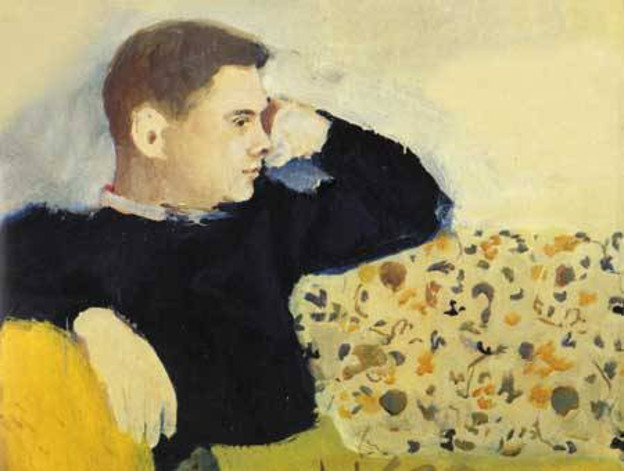Bodies-cities part 1: Queering geographic information

What are the normative units of urban space? For residents, among them are the neighborhood and the block, the street and the school catchment. For planners, they include the census tract and the district, the zip code and the precinct. In a recent article in Area, “Crossing Over into Neighbourhoods of the Body: Urban Territories, Borders and Lesbian-Queer Bodies in New York City,” geographer Jen Jack Gieseking borrows Gloria Anzaldúa’s usage of “borders” and “crossing over” to push against the existing containers for sorting urban space and the bodies that use it. Gieseking writes: “‘Crossing over’ then queers the geographic imagination of cities; when queered, urban territories ebb and flow and are not fixed to boundaries defined by the elite and/or propertied” (Gieseking 263). “Geographic imagination” is already a queering of space, imagined urban spaces pushing up against physical ones. Gieseking’s “crossing over” makes containers for urban space porous, and suggests that those containers are inherently time-based. Gieseking’s language also locates “territory” in the body, suggesting that the queer body might be another container for sorting urban space and for classifying what people do when they move around cities.
Feminist theorist Elizabeth Grosz also raises questions about the relationship between body and city in her seminal essay “Bodies-Cities.” She, like Gieseking, presents urban space as partly physical and partly imagined, and seeks to draw out how the two are conflated and who does the conflating. She sees her work as an attempt to “problematize the opposition between the inside and the outside by looking at the outside from the point of view of the inside” (242). She understands the “inside” to be the body and the “outside” to be the city. She argues that each is necessary to the comprehensibility of the other: “the city is made and made over into the simulacrum of the body, and the body, in its turn, is transformed, ‘citified,’ urbanized as a distinctively metropolitan body” (242). Grosz notes further that the city is constituted not only by the body’s physical efforts of city-making, by the body’s “muscles and energy,” but also by “the capacity to design, to plan ahead, to function as an intentionality and thereby be transformed in the process” (245).
Taken together, Gieseking and Grosz suggest that the relationship between bodies and cities requires constant negotiation. Each must be part of conversations about the other. Asking how bodies and cities interact is the means by which to write about cities, the way walking around affords an experience of how cities move. A city, like a body, is a moving thing. It might be possible, then, to speak of “dead cities,” or cities outside of the dynamics of the present, dying the way a body dies. The language around bodies and cities, as Gieseking and Grosz use it, is both transportable from one to the other and mutually constitutive. Within this mutual constitution are a number of questions. Here are two of them: 1. In what ways is a city a body? 2. What tools are necessary for addressing what queer bodies and cities are to one another? If a city is a body, it’s a queer body. The second question, therefore, is necessary to answer the first. Gieseking posits that queer bodies move around cities differently than non-queer bodies. I'll look to the work of James Schuyler, Eileen Myles, and others to figure out the ways in which that’s true.
My commentary will return to these questions, drawing on poetry written in or toward American cities from the last sixty or so years in an effort to see what poetry, broadly, can offer conversations about what a city is, if it’s queer, and how a queering of poetic form might afford ways of reading a queering of urban form and queer bodies within urban space. I’m interested in how queer geography, queer theory, and poetics might already be talking to each other.
I begin and end the series with James Schuyler’s A Few Days. Schuyler is an ideal poet with whom to think about the queering of urban territory. He’s rooted to the urban, but moves slowly through urban space. His movement creates a counterbalance to the brisk walking pace of O’Hara’s New York, and to the expectations of speed in which the New York School is enclosed. As Eileen Myles notes in “Eye: The Poems of James Schuyler,” he lost several toes to diabetes and could not walk more than a few steps at once. “The stop,” they said, “was part of his way of moving on.” Schuyler, in his poems, is very often looking through the window, offering the embodied alternative to street or neighborhood of what’s within eyeshot and earshot. He pushes against a citywide scale, favoring the hyper-local.
Recounting a radio broadcast in “Sleep-Gummed Eyes” that reports overcast weather where Schuyler sees sun from his window, he writes: “How / can it be so different / between Twenty-third Street / and wherever in the Fifties / the broadcast originates?” (12). A weather broadcast is meant to suit the city, but it fails. His city, the one he sees out the window, is dissonant with the one he receives. It’s that dissonance that queers geographic information, that calls out the city as body: regional, various, and shifting. To see the city as body, to argue for a body-city, is to argue for geographic information that needs to be amended, that falls apart, that slips variably in time, that allows the body, perhaps even the queer body, to be the primary container for urban experiences and perceptions. Time and space are often already queer in Schuyler’s poems. How that happens and what it means for how it makes the city visible is somewhere enough to start.
Queer Urban Poetics